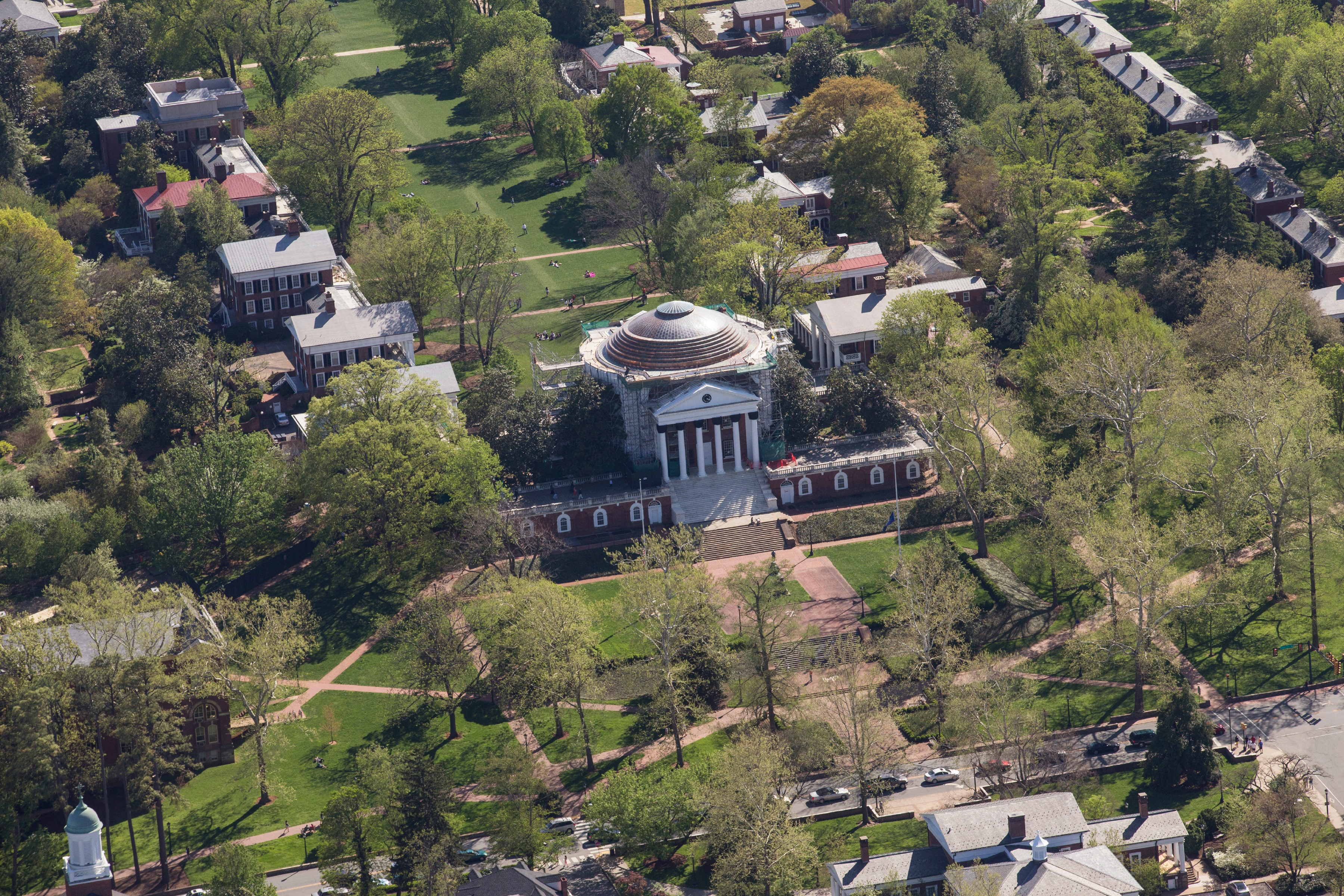As new University of Virginia employees arrived at their orientation session, they put a small, brightly colored sticky tab on a wall map of the University Grounds to show where they worked.
At the end of one session of the newly revamped program, dubbed “Grounds for Success,” the new faculty, staff and administrators found their place at U.Va. in other ways and offered this kind of feedback:
“It made me feel like I was joining a team or a family.”
“I appreciate the opportunity to reflect on why we’re here and what our roles are in the larger whole of the university.”
“I really enjoyed the history and the introduction to U.Va. culture.”
The new program, held about every two weeks, focuses on activities that involve a group of up to 25 new employees. By design, they are led to consider what part they play in the community.
The Human Resources employee development team that designed and operates the program includes Diane Ober, a training specialist who coordinates the program; Jo Ellen Wilkins, a learning and development specialist; and Tamara Sole, the director of Employee Development and the Leadership Development Center.
“The information we provide at ‘Grounds for Success’ applies to all individuals associated with U.Va., regardless of position or title,” Sole said. “We each share the University’s rich heritage and have a stake in its future. We believe ‘Grounds for Success’ is a wonderful opportunity to build collaborative networks across Grounds – it simply helps unite us all.”
“U.Va. supports and encourages a culture of leadership,” said Susan Carkeek, vice president and chief human resources officer. “Leadership begins with a feeling of investment in and connection to the University, and Grounds for Success fosters that from your very first day on Grounds.”
Previously, the new employee orientation lasted all day and was separated into faculty and staff meetings. New employees spent a lot of time filling out forms and listening to a range of representatives from around Grounds.
Now, in a half-day session, the new employees – office assistants, physicians, bus drivers, lab technicians, information technology specialists, coordinators and political science professors, just to name a few at a recent session – sit in small mixed groups, usually in the Newcomb Hall Kaleidoscope Room. They explore what U.Va. is all about through stories and fun facts, and then they explore the University on foot.
In one exercise, cards were distributed to the groups, each with an old photo that depicted a moment from U.Va. history. The group members talked about the images and tried to guess the date when things happened: for example, when the Rotunda Annex was built or when the College admitted the first undergraduate class of women.
Then, one of the two Human Resources orientation leaders went through the dozen cards and helped fill in the blanks.
To get a face-to-face perspective on many of the places, the new employees take a walking tour of the Academical Village and read aloud quotes from individuals who had been there at the historic moments.
To inject some humor in the orientation program, new employees also watch a funny and upbeat video of “Stuff Students Say,” which features a lot of the traditional lingo often heard around Grounds.
In addition to cultivating a sense of history and community, another goal of the revised program is to give the employees the right information at the right time, Ober said.
The program consists of three components: besides the orientation workshop, a checklist included in a take-away folder has another timeline of what each employee should do over the first six months, such as obtaining a U.Va. identification card and email account, signing up for direct deposit of their paychecks and completing four online learning modules.
Orientation leaders urge the new employees to complete the modules, which cover information on benefits, payroll, policies and security, within the first two weeks.
Wilkins noted, “We added flexibility to the program. Participants spend just half a day of scheduled time in class. The e-learning and checklist are generally done in the work location and are always available, so they can be completed around the new employee’s other calendar obligations within the identified time frames.”
Even though it’s a streamlined and more efficient process, there is still a lot of material to present, so organizers invited a revolving group of facilitators from the Human Resources staff to take part.
Sue Haas, director of information technology for Human Resources, joined Ober to lead part of a recent session.
“It’s inspiring to be a part of and to say, ‘It’s important that you are here,’ and to inspire others to make their careers here,” Haas said.
One way that the program facilitates that goal is a discussion of U.Va.’s “Four Pillars,” or focus areas – teaching, research, public service and patient care. Workers are asked to write down what they do and which pillar (or pillars) they support.
The facilitators offer a short primer on the mission and values of the University, including maintaining the quality of the faculty and the student experience, preparing for future enrollment growth, performing global outreach, and supporting community diversity and sustainability efforts. They also introduce a brief overview of the University’s top leaders and key statistics to introduce the latest strategic planning ideas.
Then they made it personal, giving each person a blank timeline card and asking, “Imagine where you fit in. Think of your future here and how you’re helping to build the future of U.Va.
“What might you contribute?”
Media Contact
Article Information
August 16, 2013
/content/grounds-success-helps-new-uva-employees-link-past-present-and-future

